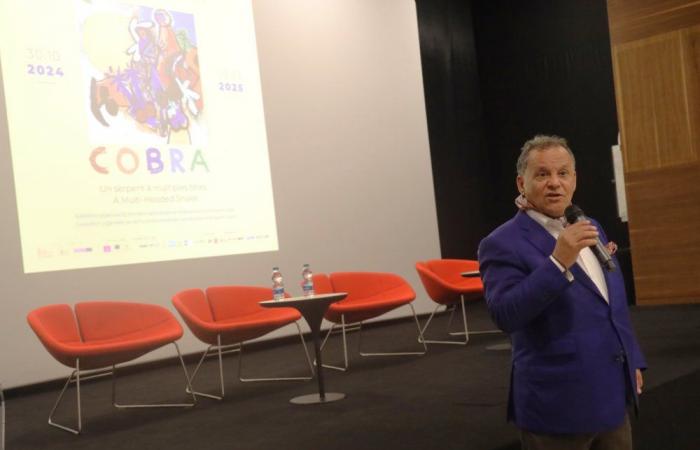Organized by the National Museum Foundation (FNM) and the Cobra Museum (Netherlands), this exhibition highlights the inheritance of a group of artists born in the 1940s by merging the names of the cities of Copenhagen, Bruxelles et Amsterdam (Cobra).
During this event, which continues until March 3, 2025, more than 100 works, including paintings, sculptures, engravings, drawings et photographsare presented to the public, illustrating the diversity and depth of this movement and revealing its spontaneous and free soul.
Speaking on this occasion, the president of the FNM, Mehdi Qotbiindicated that “Cobra» was born from the imagination of a group of international artists who had played a determining role in the evolution of modern and contemporary art that marked the 20th century.
Stressing that Morocco is a country open to different artistic experiences around the world, he noted that HM King Mohammed VI launched, ten years ago, a new cultural and museological impulsethrough the inauguration of the MMVI.
For her part, the director of Cobra Museum in Amsterdam, Susane Wallingaexplained that this event brought together 100 artists from Cobra movement and highlights the bold and revolutionary spirit of this movement, whose different foundations maintain an important link with African and Moroccan art. Ms. Wallinga specified that this event also constituted an opportunity for exchange between Moroccan artists and members of the Cobra group, adding that in 2022, the Dutch Museum hosted an exhibition of Moroccan artists which was a great success.
The exhibition route is divided into several sections, leading the public to discover the evolution of this unique artistic adventure. At the heart of the exhibition, emblematic figures of the movement such as Asger Jorn, Christian Dotremont, Constant, Pierre Alechinsky, Karel Appel et Crow come to life and reveal their worlds.
The event also highlights the plurality of artists “Cobra» and their origins, revealing a colorful and innovative group. It also offers a presentation of the evolution of the movement from its beginnings to the present day, testifying to its richness and complexity.
The influence of African artnotably that of North Africais particularly highlighted, showing how these artistes have drawn on this source of inspiration to broaden their field of expression.






